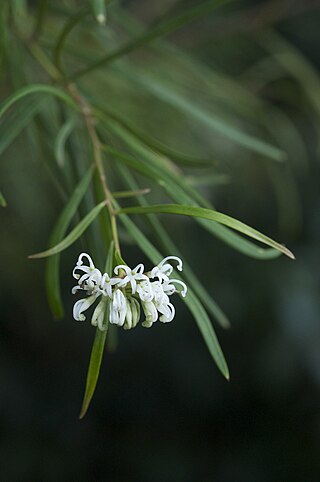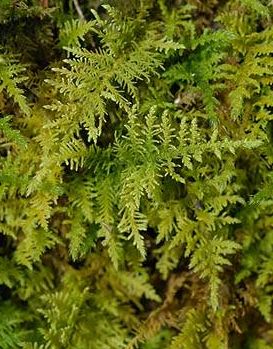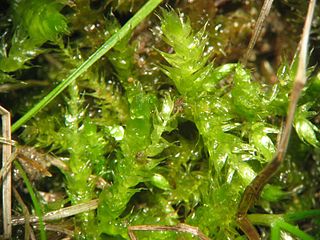
The waxwings are three species of passerine birds classified in the genus Bombycilla. They are pinkish-brown and pale grey with distinctive smooth plumage in which many body feathers are not individually visible, a black and white eyestripe, a crest, a square-cut tail and pointed wings. Some of the wing feathers have red tips, the resemblance of which to sealing wax gives these birds their common name. According to most authorities, this is the only genus placed in the family Bombycillidae, although sometimes the family is extended to include related taxa that are more usually included in separate families: silky flycatchers, Hypocolius (Hypocoliidae), Hylocitrea (Hylocitreidae), palmchats (Dulidae) and the Hawaiian honeyeaters (Mohoidae). There are three species: the Bohemian waxwing, the Japanese waxwing and the cedar waxwing.

A stringybark can be any of the many Eucalyptus species which have thick, fibrous bark. Like all eucalypts, stringybarks belong to the family Myrtaceae. In exceptionally fertile locations some stringybark species (in particular messmate stringybark can be very large, reaching over 80 metres in height. More typically, stringybarks are medium-sized trees in the 10 to 40 metre range.

The Slate Islands are a small archipelago in Lake Superior, Ontario, Canada, about 12 kilometres (7.5 mi) south of the town of Terrace Bay. The island group, consisting of 15 islands in total, was created by a meteorite impact which formed a crater about 32 km (20 mi) wide. In 1985, the Ontario government established the Slate Islands as a natural environment provincial park. The islands are notable for having Ontario's largest herd of boreal woodland caribou.

Pennywort is a common name given to several different plants around the world. In general they have round leaves and a low-growing habit. Pennywort may refer to:
NVC community H5 is one of the heath communities in the British National Vegetation Classification system. It is one of three communities which are considered transitional between the lowland dry heaths and the wetter communities classified in the NVC as mires.
British NVC community MG2 is one of the mesotrophic grassland communities in the British National Vegetation Classification system.

Helodium blandowii, also known as Blandow's helodium moss, Blandow's tamarisk-moss, Blandow's bogmoss, and Blandow's feathermoss, is a rare plant in the Western U.S., including Oregon and California. It occurs all around the northern hemisphere in higher latitudes, and in some places is not as rare as in the Western U.S.

Grevillea linearifolia, commonly known as linear-leaf grevillea, is a species of flowering plant in the family Proteaceae and is endemic to New South Wales. It is an open, erect shrub with linear to narrowly elliptic leaves, and clusters of white flowers.
Thamnobryum angustifolium, the Derbyshire feathermoss, is a species of moss in the Neckeraceae family. It is endemic to Derbyshire, England, being restricted to a single SSSI, where the main colony covers about 3 square metres (32 sq ft) of a single rock face, with small subsidiary colonies nearby. Threats include disturbance from cavers and climbers, collection by bryologists, pollution of the spring in which it grows, and desiccation during periods of drought. Its natural habitat is rivers.

Hypnales is the botanical name of an order of Bryophyta or leafy mosses. This group is sometimes called feather mosses, referring to their freely branched stems. The order includes more than 40 families and more than 4,000 species, making them the largest order of mosses.

Hypnum cupressiforme, the cypress-leaved plaitmoss or hypnum moss, is a common and widespread species of moss belonging to the genus Hypnum. It is found in all continents except Antarctica and occurs in a wide variety of habitats and climatic zones. It typically grows on tree trunks, logs, walls, rocks and other surfaces. It prefers acidic environments and is fairly tolerant of pollution. It was formerly used as a filling for pillows and mattresses; the association with sleep is the origin of the genus name Hypnum.
Silky oak is a common name for Grevillea robusta.

Brachytheciaceae is a family of mosses from the order Hypnales. The family includes over 40 genera and 250 species.
This page is based on this
Wikipedia article Text is available under the
CC BY-SA 4.0 license; additional terms may apply.
Images, videos and audio are available under their respective licenses.








